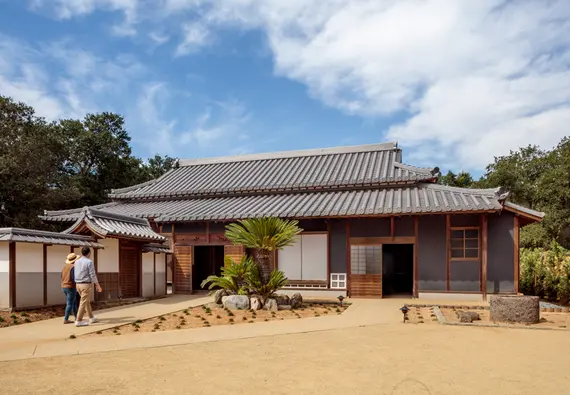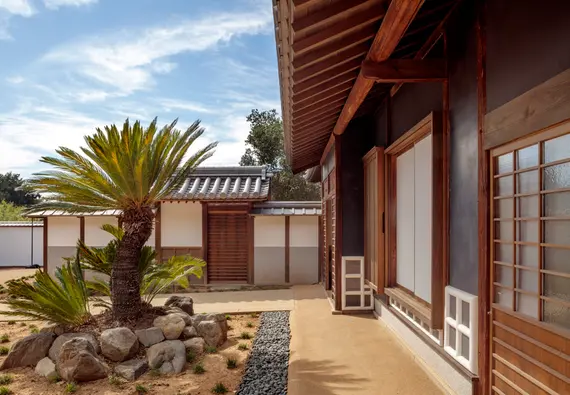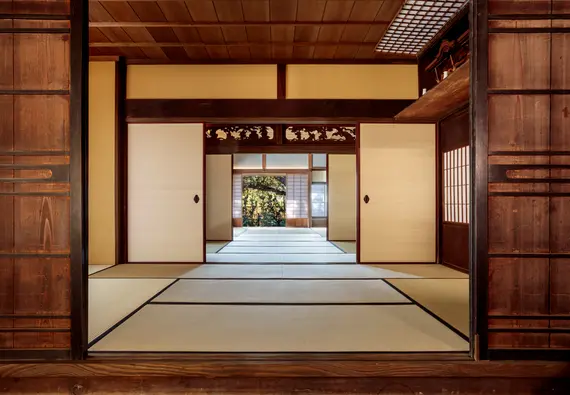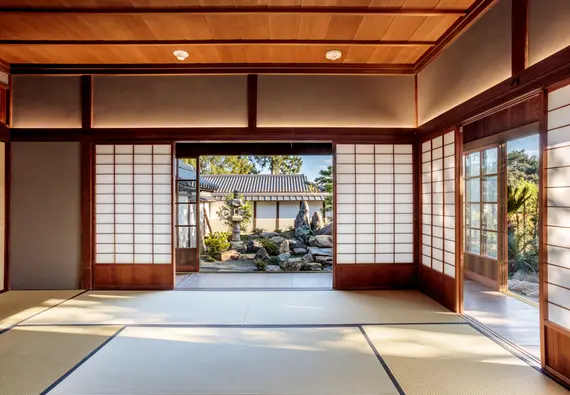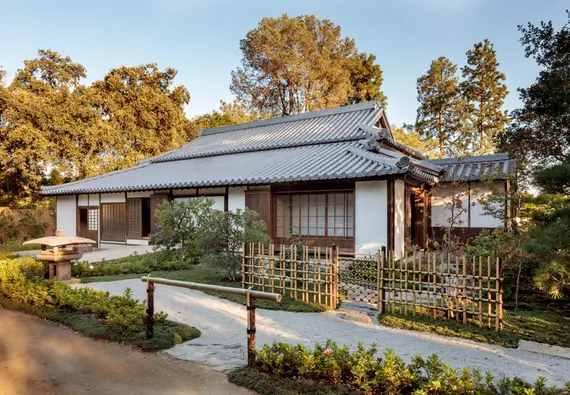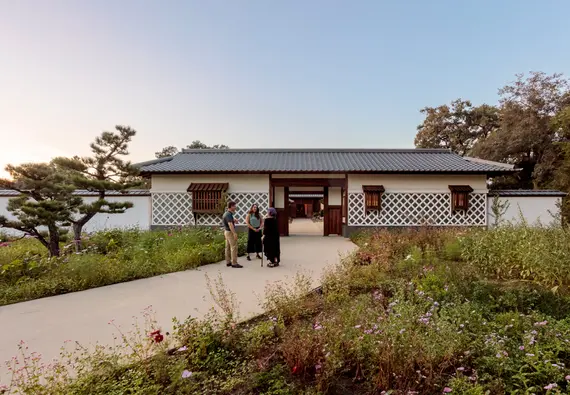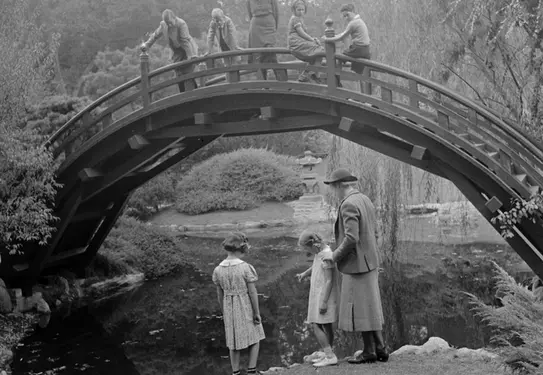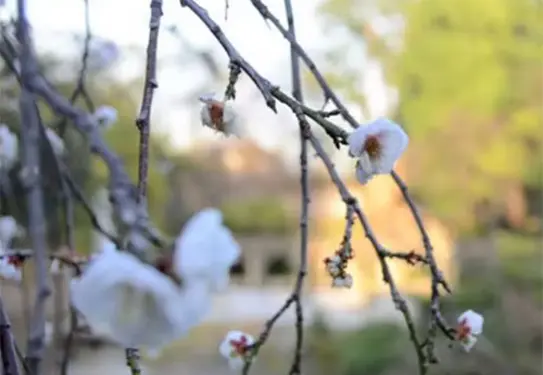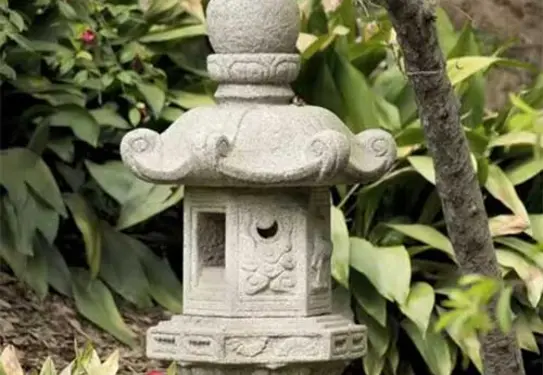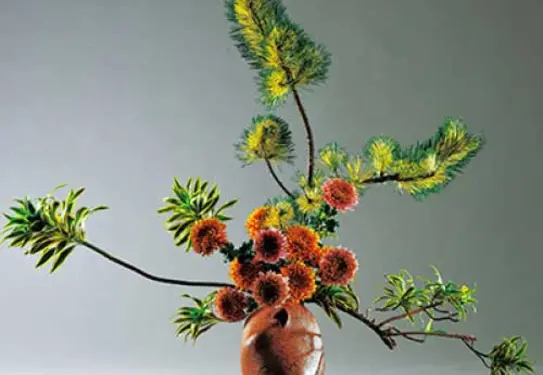
Japanese Garden
Japanese Heritage Shōya House
Experience a restored residential compound from 18th-century Japan providing a glimpse into rural Japanese life some 300 years ago.
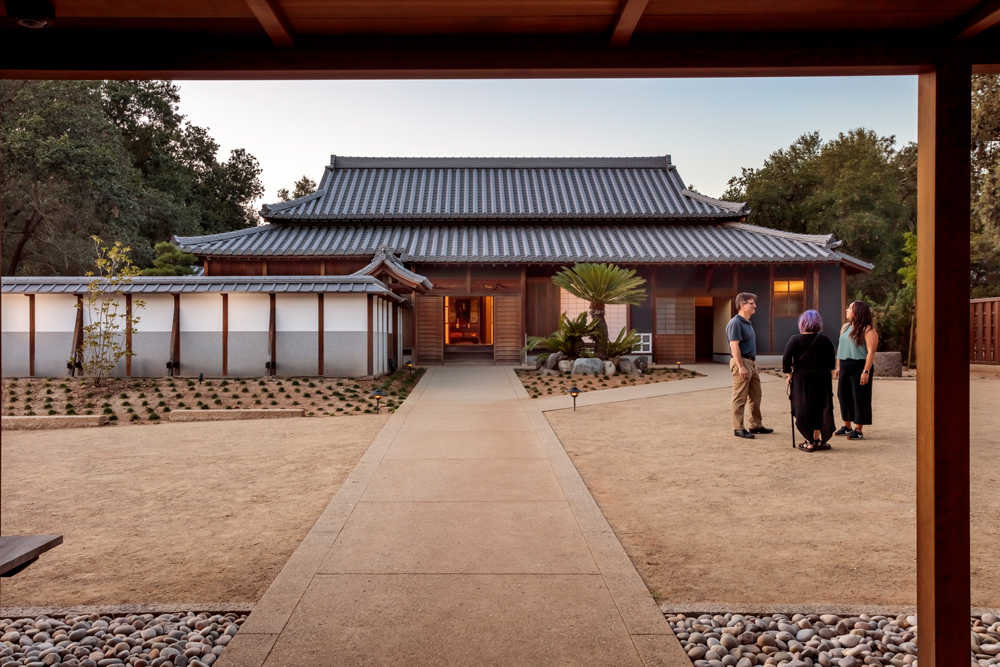
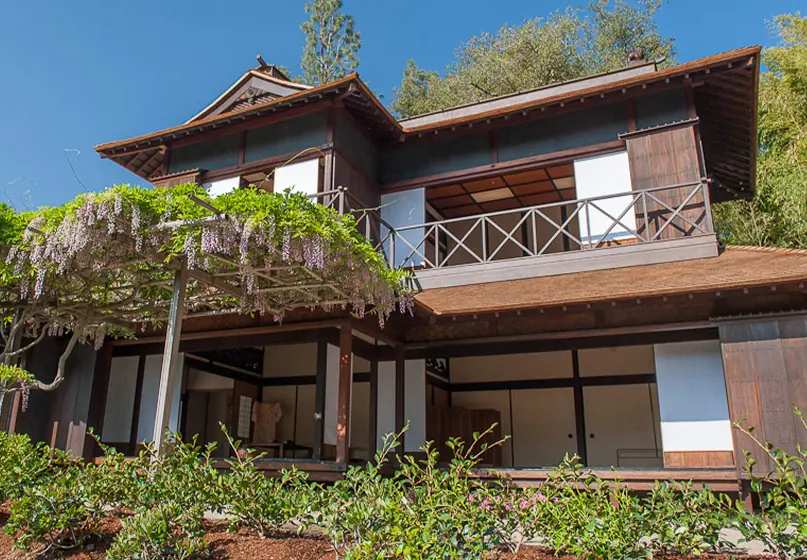
View of the Japanese House. | The Huntington Library, Art Museum, and Botanical Gardens.
Japanese House
Elements of this five-room house were created in Japan and shipped to Pasadena around 1904 for a commercial garden. Acquired by Henry E. Huntington in 1911, the structure is composed of several Japanese woods, with paneled doors to the outside that can be left open or closed to allow inhabitants to enjoy the gardens around them. Inner walls can easily be moved to increase room size or privacy. During a 2011 renovation, original architectural features were discovered, such as the distinctive curves of the roof line and original plaster and wood finishes. Restored, today the structure is considered one of the best examples of early twentieth-century Japanese architecture in the United States.
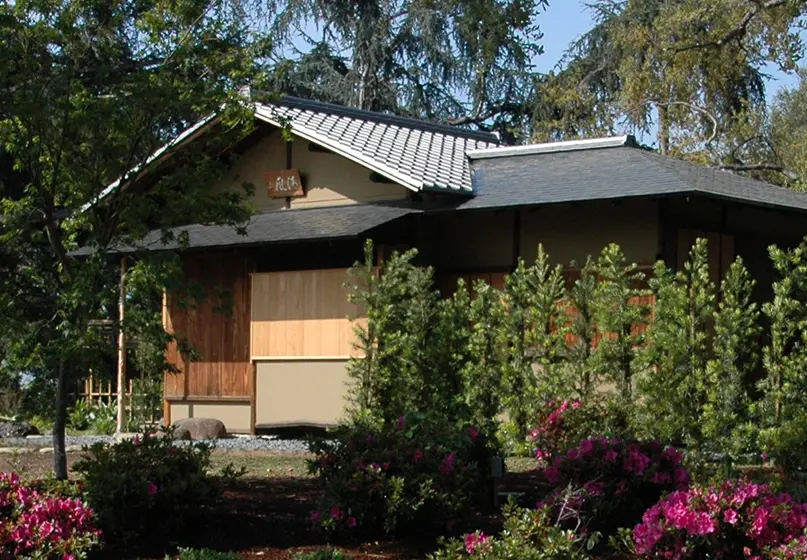
Seifu-an (the Arbor of Pure Breeze) in the Japanese Garden. | The Huntington Library, Art Museum, and Botanical Gardens.
Ceremonial Teahouse
The ceremonial teahouse, called Seifu-an (the Arbor of Pure Breeze), was built in Kyoto in the 1960s and donated to The Huntington by the Pasadena Buddhist Temple. In 2010, the teahouse made a return trip to Japan for restoration, overseen by Kyoto-based architect Yoshiaki Nakamura (whose father built the original structure). It was then shipped back to San Marino and painstakingly reassembled. The teahouse location within a traditionally landscaped tea garden atop a picturesque ridge provides a stunning setting for demonstrations of the traditional Japanese tea ceremony. (Unlike the tea shop in the Chinese Garden or the Rose Garden Tea Room, it does not serve refreshments.)
Zen Court

The Zen Court provides an example of the contained landscapes that once evolved in the temple gardens of Japan. Patterns raked into gravel, rock formations, and shrubbery are used to symbolize water, space, movement, and other abstract ideas.
Bonsai Collection
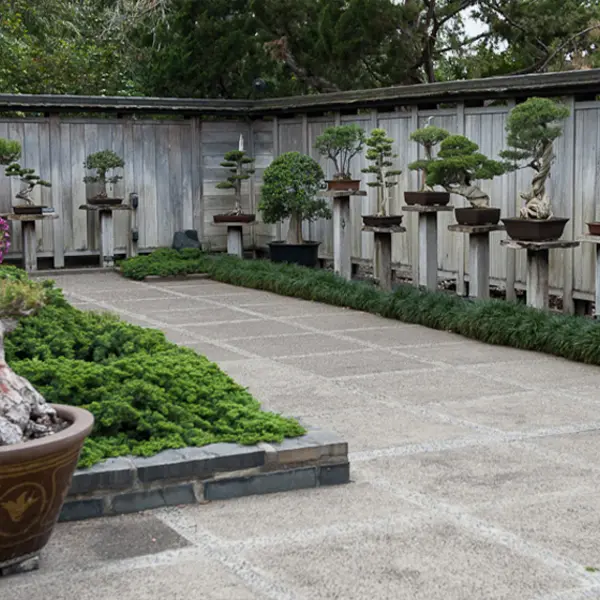
Since 1990, The Huntington has served as the Southern California site for the Golden State Bonsai Federation and trees in the collection now number in the hundreds.
Suiseki Court
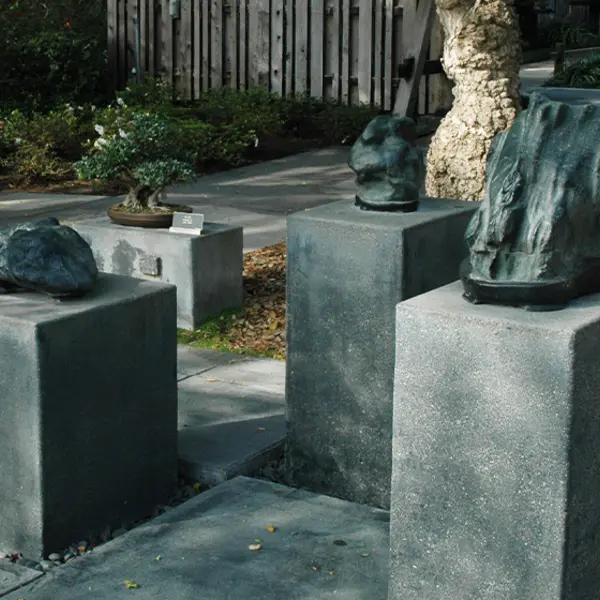
In the Harry Hirao Suiseki Court, visitors are invited to touch the suiseki or viewing stones, an ancient Japanese art form.
